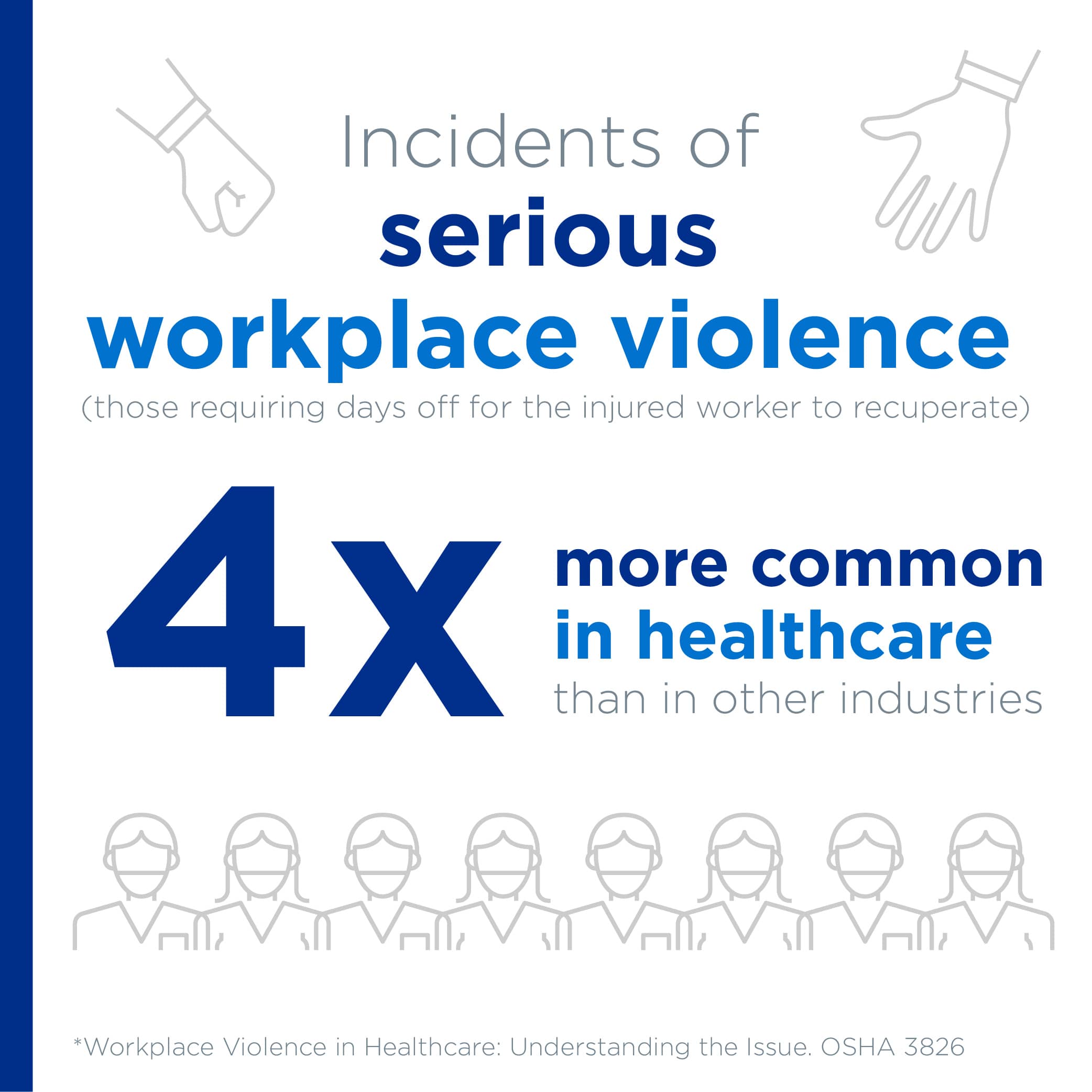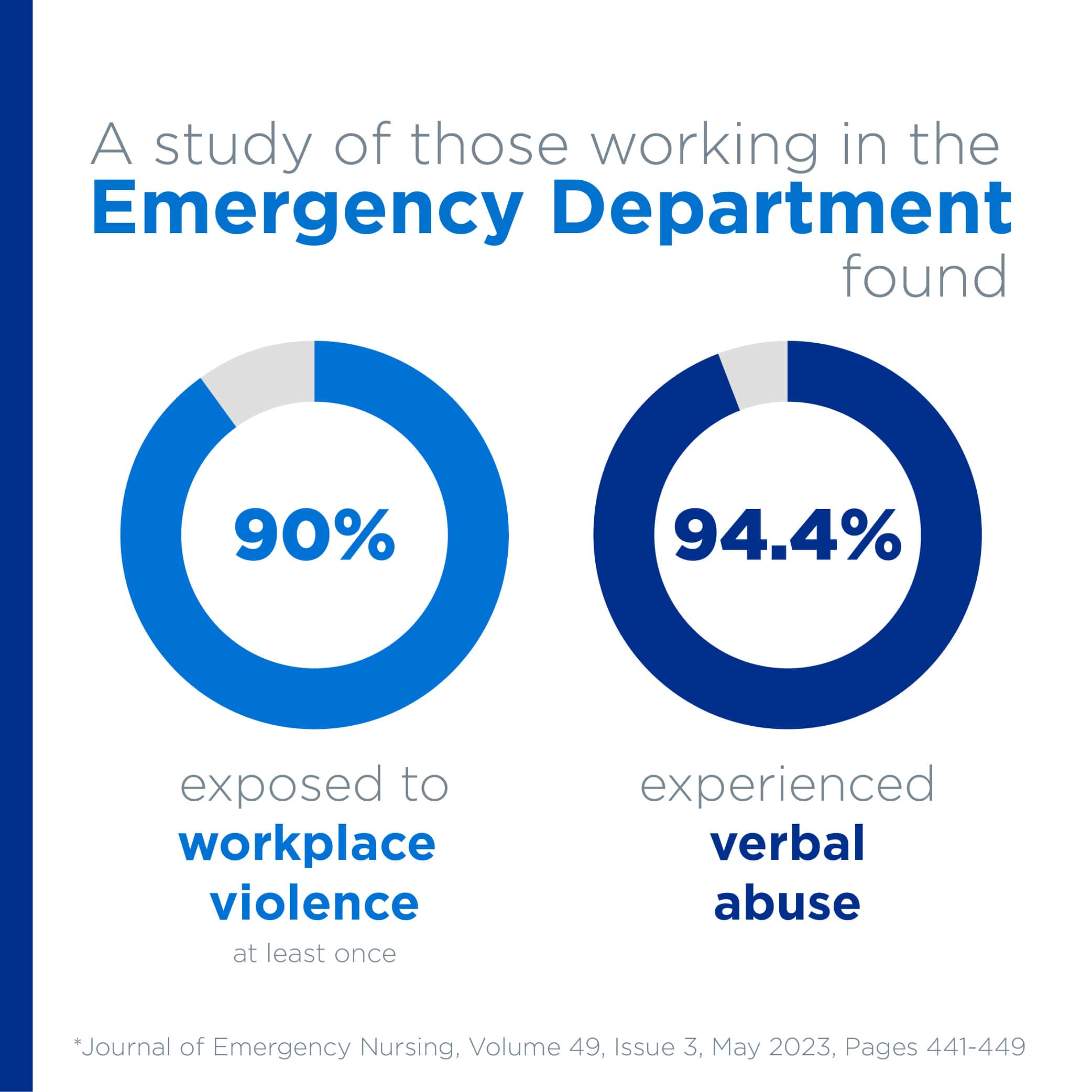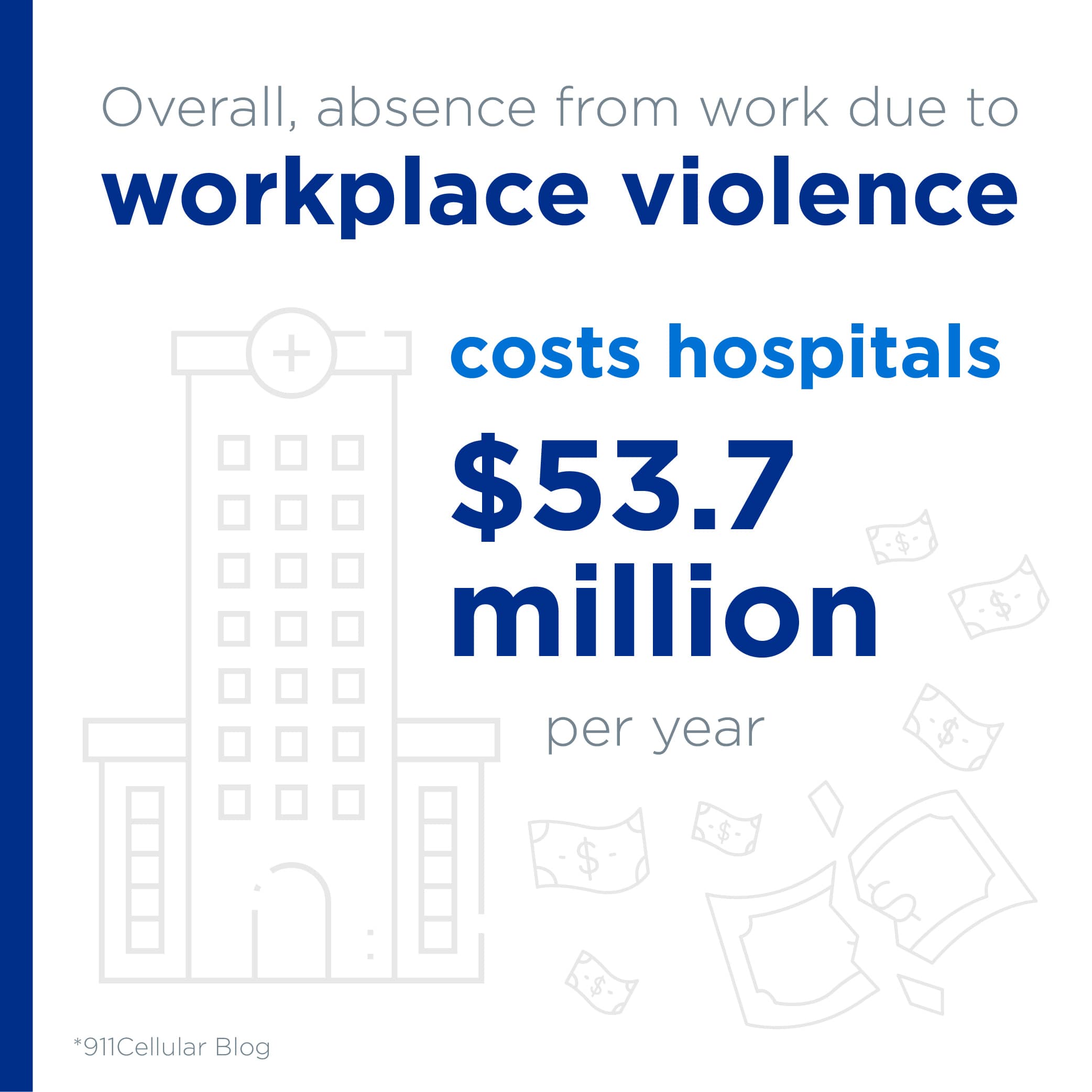Workplace violence is undeniably a widespread issue in the healthcare sector that poses significant risks to healthcare professionals.
According to the Occupational Safety and Health Administration (OSHA), healthcare workers are at an increased risk for workplace violence. From 2002 to 2013, incidents of serious workplace violence (those requiring days off for the injured worker to recuperate) were four times more common in healthcare than in other industries. (Workplace Violence in Healthcare: Understanding the Issue. OSHA 3826)

Injuries due to workplace violence can have a substantial impact on healthcare workers and healthcare facilities, including lost hours, wages, medical bills, recruiting costs, and medical errors, to name but a few.
In this article I would like to briefly highlight statistics on injuries due to workplace violence, costs associated with losing healthcare professionals, pending legislation and effective prevention efforts.
Statistics on Workplace Violence in Healthcare Sector
On 01 February 2023 the American Journal for Industrial Medicine reported approximately 1.14 million injuries to workers in the healthcare industry were treated in US hospital emergency departments between 2015 and 2017. Intentional injuries by another person accounted for 15% of these healthcare-related injuries equalling 171,000 workplace violence related injuries (Wiley Online Library, Imani Carey MPH, Kitty Hendricks MA 01 February 2023)
Furthermore, the Journal of Emergency Nursing reported that 90% of the study participants were exposed to workplace violence at least once while working in the emergency department, and 94.4% experienced verbal abuse. The most important perceived reasons for workplace violence were the long waiting period for treatment and care (79.6%) and not being prioritised for treatment (68.5%). Journal of Emergency Nursing, Volume 49, Issue 3, May 2023, Pages 441-449)

According to the U.S. Bureau of Labour Statistics, there were 78,740 cases of nonfatal workplace injuries and illnesses that resulted in at least one day away from work among registered nurses in private industry in 2020. This was a 290.8-percent increase, about four times as many cases, compared with 2019 (Fact Sheet | Workplace Violence in Healthcare, 2018 | April 2020)
Costs Associated with the Loss of Medical Professionals
Workplace violence is a considerable concern in the healthcare industry. According to the 911Cellular Blog, healthcare workers who experience workplace violence utilise roughly 112.8 hours per year of sick, disability, and leave time. Overall, absence from work due to workplace violence cost hospitals $53.7 million per year.

The overall costs associated with the loss of a healthcare professionals due to workplace violence can be extensive. The Occupational Safety and Health Administration (OSHA) agency reported that in one hospital system, a violent workplace injury costs the organisation nearly $94,000 that year on average. This is independent of the even more costly mental and physical costs that healthcare workers face due to this issue, including stress, fatigue, and job dissatisfaction.
In addition, one would also have to calculate the cost of recruiting and training new healthcare workers, which can be high, depending on the profession. Additionally, medical errors can occur when healthcare workers are traumatised or fatigued, leading to additional costs and risks to patient safety.
New Legislation Regarding Workplace Violence in the Healthcare Industry
The Workplace Violence Prevention for Health Care and Social Service Worker Act was introduced in Congress on 18 April 2023.
The main provision of the bill would require the federal Occupational Safety and Health Administration (OSHA) to issue a standard requiring healthcare and social service employers to write and implement a workplace violence prevention plan to prevent and protect employees from violent incidents.
If the bill becomes law across all States, it will apply to many healthcare settings, including hospitals, residential treatment facilities, non-residential treatment settings, medical treatment or social service settings in correctional or detention facilities, psychiatric treatment facilities, substance use disorder treatment centres, community care settings, and federal healthcare facilities.
The Act sets clear minimum requirements for employers' workplace violence prevention plans, based on the truly groundbreaking California Senate bill. These requirements include unit-specific assessments and implementations of prevention measures, including physical changes to the environment, staffing for patient care and security, employee involvement in all steps of the plan, hands-on training, robust record-keeping requirements (including a violent incident log), and protections for employees to report any act of workplace violence.”
Effective Prevention Efforts
Prevention efforts are critical to reducing the incidence of workplace violence in the healthcare industry. Effective prevention strategies include:
Training and awareness programs: Healthcare facilities should provide training and awareness programs to help employees recognise and manage violent behaviours in the workplace, de-escalate potentially hostile situations, and communicate effectively with patients, visitors, and colleagues.
Behavioural threat assessment and management teams: Healthcare facilities should establish risk and threat assessments management teams to identify and manage potentially violent situations.
Policies and procedures: Healthcare facilities should develop and implement policies and procedures to prevent and respond to workplace violence.
Creating a culture of safety and support: Healthcare facilities should carefully develop a culture of respect and empathy, promote mental health and well-being, and encourage open communication between employees and management. Employees should be encouraged to speak freely about any incidents of workplace violence, without fearing any type of repercussions.
Conclusion
Healthcare professionals are at high risk of experiencing violence in the workplace. Injuries due to workplace violence can have a substantial impact on healthcare workers and healthcare facilities. The costs associated with losing a medical professional due to workplace violence can be significant, including lost hours, wages, medical bills, recruiting costs, and medical errors. Legislation and effective prevention efforts are critical to reducing the incidence of workplace violence in the healthcare industry.
Healthcare facilities and management should promote a culture of safety, provide appropriate training, establish risk, and threat assessments and, of course, act on them accordingly. They should also develop policies and procedures to prevent and respond to workplace violence.
Healthcare facilities and management can also take steps to mitigate the risk of workplace violence by providing adequate PPE (Personal Protective Equipment), such as bite, scratch and pinch resistant clothing.
By adopting a comprehensive approach to workplace violence prevention, healthcare employers can create safer workplaces and protect their employees from assaults, subsequent injuries and psychological distress.
About the Author
Robert Kaiser is the Founder and CEO of BitePRO®, the world's first specialised brand of protective clothing, offering dependable scratch and bite protection for healthcare workers, education professionals, and others working with individuals displaying challenging behaviour. Robert is a widely respected expert in workplace violence and violence prevention. His written work has been published in several international industry leading publications.


